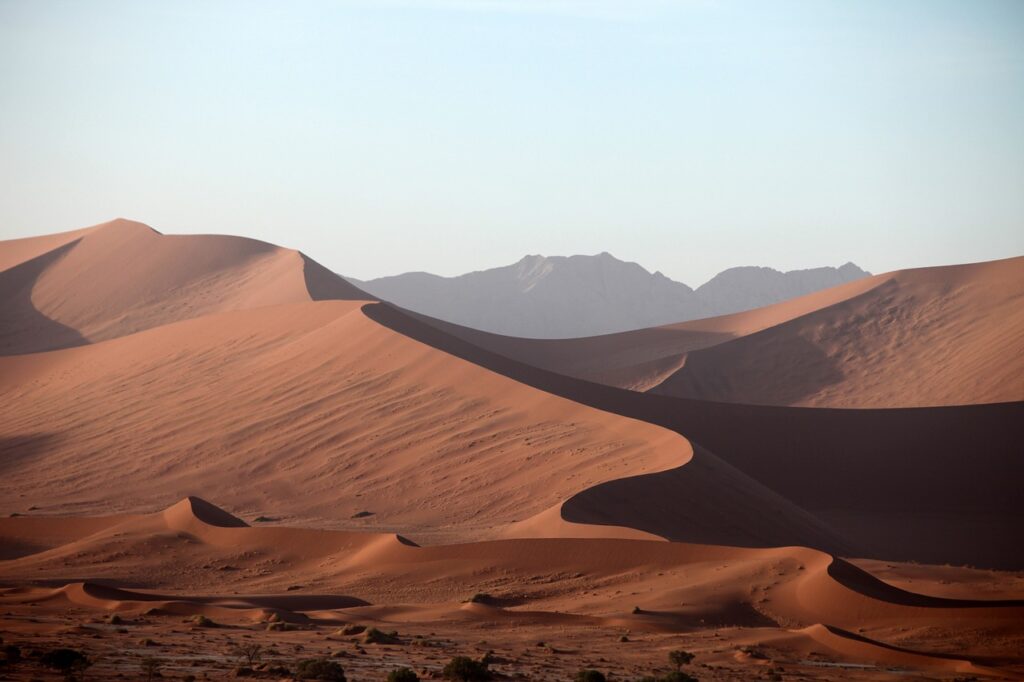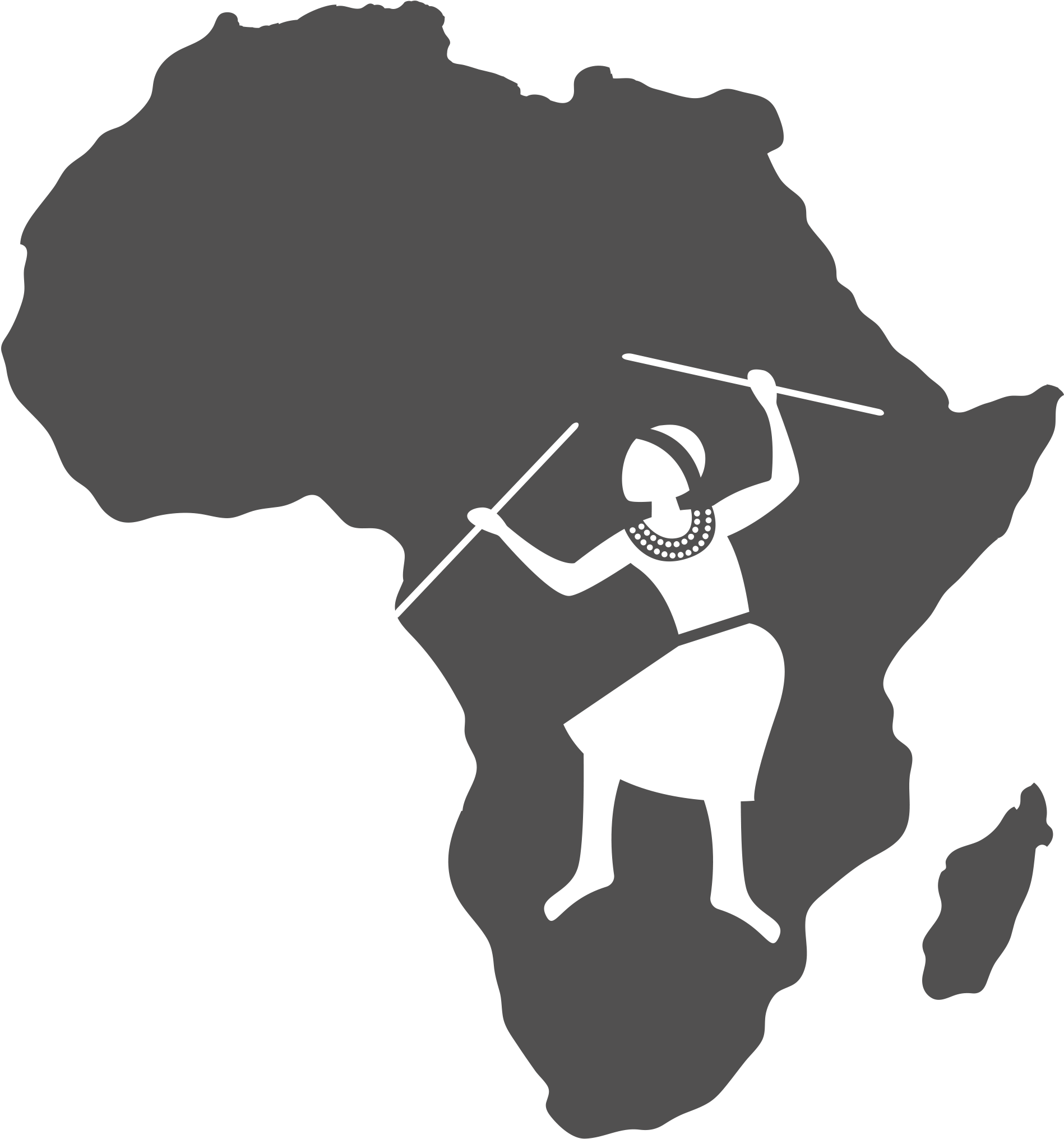***Etosha national park
Etosha National Park in Namibia is a fantastic place to go on safari for first-time visitors to Africa who are looking for an adventure they will never forget. The park has an astonishing 114 different species of mammals, making for a once-in-a-lifetime safari experience. The park is located in the northern part of Namibia and is a paradise for self-drivers. It is home to the enormous Etosha Pan, which is a mineral pan that is four times the size of Los Angeles. The dry season in Namibia lasts from May to October, and during that time the ephemeral water holes surrounding Etosha Pan attract animal populations of biblical proportions. As a result, Etosha Pan is an excellent location for a safari.
Etosha National Park, which borders the northeastern part of Damaraland, is home to one of the continent’s biggest populations of the black rhino, which is a species that is in risk of extinction. While staying in the park, going on a guided safari, or even just relaxing by a waterhole with a thermos and binoculars, guests may take in a spectacular show that is illuminated by floodlights. In addition, the park is home to Twyfelfontein, a collection of rock art that is considered to be among the most comprehensive in all of Africa, with approximately 2500 engravings. In general, Etosha National Park is a wonderful place for individuals who are looking for an experience on an African safari that will stick with them forever.
**Sossusvlei
The stunning site of Sossusvlei may be found in Namibia’s Namib Desert. This location is renowned for its seemingly unending sea of rust-red dunes, bleached white pan, and old trees. The oryx raises its beautiful, flowing tail, which allows for breathtaking vistas of the surrounding terrain. A trip to Sossusvlei is not complete until the traveler has climbed Big Daddy, the world’s highest dune, and taken a seat on the peak of the world’s tallest dune. Because the environment is at its most breathtaking just before dawn and just after sunset, it is an excellent location for photographers to visit. The Deadvlei pan, which is a big pan that is sometimes covered in water, and the Deadvlei pan, which is stretched out in the shadow of Big Daddy dune, both provide amazing contrasts, crisp lines, and colors that make the region a paradise for photographers, particularly in the late evening and early morning light.
***Skeleton Coast
The Skeleton Coast is a mystery region that is recognized for its spectacular beaches and legendary shipwrecks. It is located at the point where the world’s oldest desert meets the tumultuous Atlantic Ocean. Shipwreck Lodge, located inside Skeleton Coast National Park, is a one-of-a-kind establishment where guests may embark on guided beach walks or 4×4 safaris in search of creatures that make their homes in the desert. The region is home to almost 250 different kinds of birds, as well as animals that can survive in desert environments, such as lions, elephants, and brown hyenas. The town of Swakopmund, which is situated exactly in the middle of Namibia’s most popular tourist destinations, is an ideal starting point for excursions along the Skeleton Coast. Desert excursions, sea kayaking, scenic flights, and other adventure sports like quad riding, paragliding, sandboarding, and skydiving are some of the things that may be done in the region.
Swakopmund is the perfect place to take a break after the long drive between Sossusvlei and Etosha. It will give you a surge of adrenaline that will help you separate the important things in your life from the unimportant ones. One of the best places to see wildlife in Namibia is in the Damaraland area, which is known for its jagged rock formations and dry river beds. Here, you may see elephants and lions that have adapted to the arid environment.
***DamaraLand
Damaraland area, which is located close to Etosha and the Skeleton Coast. Damaraland is a gorgeous place. It is home to a variety of desert-adapted elephants, rhinos, lions, oryx, and springbok, in addition to countless bird species, making for an experience that is really once in a lifetime. Granite hills, wide-open plains, grassland, prehistoric water streams, huge gorges, and steep topography are some of the defining characteristics of this area. The landscape undergoes a dramatic shift to the west, where a never-ending sand wasteland ultimately gives way to the churning waters of the Atlantic Ocean along the Skeleton Coast.
Small populations of desert-adapted elephants, black rhinos, giraffes, ostriches, oryx, and springbok may be found in Damaraland. Also found there are ostriches. These creatures are able to go up to 70 kilometers (40 miles) every day across the desert in search of food and water without causing any damage to the trees in the area. The Brandberg, which is the highest mountain in Namibia, is home to one of the world’s finest collections of ancient rock paintings. It is also regarded to be Africa’s largest open-air art gallery because of its expansiveness. In addition, there are ancient sites in the region, as well as a rich assortment of different kinds of rare plants.
Around 2,000 rock carvings and paintings dating back to the early Stone Age may be seen at Twyfelfontein, which is a World Heritage Site. These works of art were created by San hunters during this time period. It’s possible that the San people, who were members of indigenous hunter-gatherer communities, were attracted to the area’s sole perennial spring back when it was still in its ancient phase.
The Petrified Forest is a prehistoric remnant that was subjected to enormous volcanic activity around 200,000 years ago. It may be found in the southern portion of Damaraland. Because of the process of silicification, the tree trunks were petrified, which turned the wood into stone. Many of the large logs that are still present in the region today have been uncovered as a result of erosion.The Organ Pipes, a peculiar sequence of dolerite pillars, are another geological feature in Damaraland. They were created around 150 million years ago when molten lava was forced into a slate rock structure.
***KaokoLanda
Kaokoland is a region in Southern Africa that is notoriously difficult to reach due to its distant position and isolated character. It is said to be one of the last surviving pockets of unspoiled wilderness in Southern Africa, and it has a mountainous environment with an otherworldly and ruggedly beautiful aesthetic. The interesting Himba people are from Kaokoland, where they subsist off the land in perfect harmony with their natural surroundings. Kaoveld is a haven for rare desert-adapted elephants, black rhinos, giraffes, oryx, and even lions due to the low human density that exists there. There is only one person living there for every two square kilometers (0.8 square miles). Due to the low population density of the area, the best way to enjoy it is as a fly-in destination. There is only one person living here for every two square kilometers.
In order to have the whole Kaokoland experience, tourists may go on safari in search of desert-adapted elephants, rhinos, giraffes, and lions, as well as participate in cultural exchanges with the Himba people who live in the area. It is advised that people doing research on wildlife do it at the Hoanib Research Centre, namely those researching the desert-adapted lion, and at the Giraffe Conservation Foundation. The ideal way to experience Kaokoland is on a self-drive, four-wheel drive camping trip with a large group and many cars. As a result, Kaokoland is on many people’s “bucket list” for a return trip.
***Swakopmund Swakopmund, a charming beach tourist town in Namibia, combines its German colonial background with a particular African character, making it an eerie and one-of-a-kind destination. This combination makes Swakopmund a bizarre and unusual location. Swakopmund is an excellent destination to stay over during a Namibia safari because of its palm-lined streets, beachfront promenades, and nice summer environment. It is also an ideal site for self-drivers to relax and recharge their batteries before continuing on their journey. Sandboarding, quad riding, and 4×4 driving on the dunes are just some of the sports that can be enjoyed in Swakopmund, which is often regarded as the most exciting destination in all of Namibia. In addition, tourists may take boat tours to seek for seals and dolphins, and they can also explore Swakop’s restaurants, art galleries, and museums. Cafés and art museums are also available. On the travel circuit through Namibia, Swakopmund is a popular stop because of its laid-back atmosphere, architecture heavily influenced by German design, and plenty of adventure sport providers.
A bird-filled lagoon and towering sand dunes can be found at Sandwich Harbor, which makes this town a perfect base from which to explore the Cape Cross seal reserve, Walvis Bay, Dune 7, and other nearby attractions. The Central Coastal Region of Namibia is an Excellent Destination for a Short Stay as it Provides a Good Introduction to the Country of Namibia.
***The Fish River Canyon
The Fish River Canyon, which can be found in the southern part of Namibia, is the second biggest canyon in the world and contains a gargantuan gorge that is around 160 kilometers (100 miles) long, up to 27 kilometers (17 miles) broad, and may reach a depth of over 550 meters (1 805 feet). The wide and desolate region is blissfully untroubled by people, offering a haven for a variety of animals including fish, mammals, reptiles, and insects. The bottom of the canyon is covered with natural hot springs, which not only draw a variety of water birds but also draw in other animals that live in the canyon, such as mountain zebra, kudu, oryx, and gazelle. Additionally, the canyon is frequented by predatory animals such as leopards, jackals, brown hyenas, and bat-eared foxes. People who are interested in nature should make it a point to visit the canyon since it provides an opportunity that is both unique and memorable.

